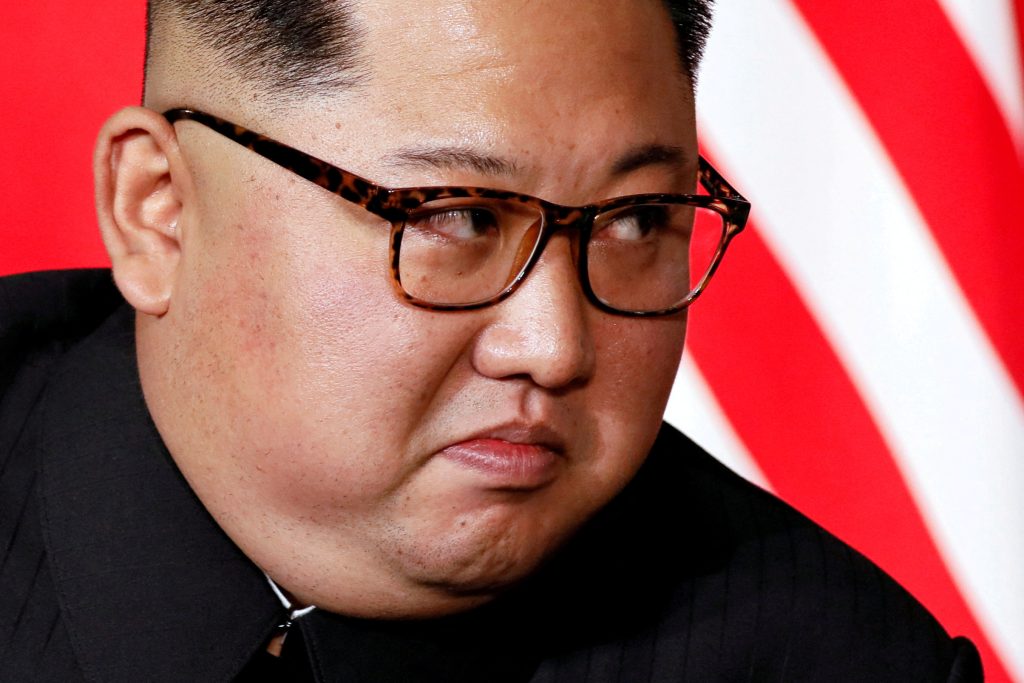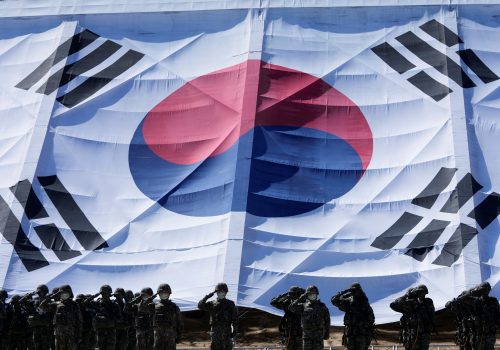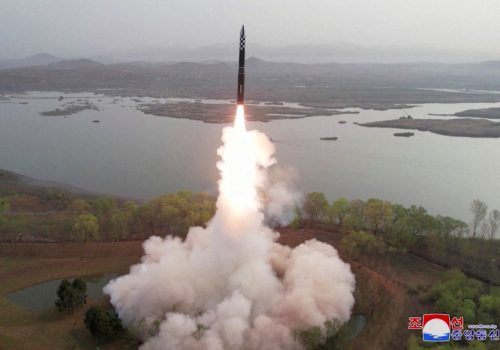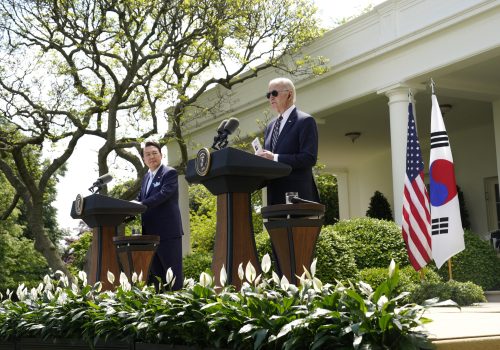June 22 marked a watershed moment for analysis of North Korea. For the first time in over a decade, the US intelligence community publicly released a National Intelligence Estimate (NIE) on North Korea, titled “North Korea: Scenarios for Leveraging Nuclear Weapons Through 2030.” Completed in January 2023, this NIE is more than thirty years more recent than all the previously released North Korea NIEs, which date back to the 1980s or before.
The new NIE lays out three pathways through 2030 for how North Korean leader Kim Jong Un’s strategy could evolve as his nuclear weapons capabilities improve. The NIE concludes that the by far most likely pathway is for Kim to leverage his nuclear capability for “coercion, potentially including non-nuclear lethal attacks, aimed at advancing the North’s goals.” It also delineates two additional low-likelihood pathways: North Korea could employ an offensive strategy to dominate the Korean Peninsula through the use of force, or it could turn to a defensive strategy, in which nuclear weapons are used solely as a deterrent. According to the estimate, Kim is most likely to continue pursuing coercion because he will be “confident that his growing nuclear capabilities will deter any unacceptable retaliation or consequences” but that he would not actually attack with them unless he “believes his regime is in peril.”
As a former National Intelligence Officer for North Korea who led the development of NIEs, I see this document as monumental in my particular niche, but some additional context is needed to understand why. Since the 1950s, NIEs have been the US intelligence community’s most authoritative written judgments on national security issues, developed through a collaborative process led by the Office of the Director of National Intelligence’s National Intelligence Council (NIC) and its predecessor organizations. This new NIE is a tantalizing glimpse of the US intelligence community’s larger strategic intelligence picture on North Korea, even as it necessarily represents only the tip of the iceberg of a much longer classified document.
What is perhaps most remarkable about the latest NIE is that it highlights very recent key intelligence community judgments about North Korea. This is a major and unusual step, given that this practice was largely halted after the declassification of key judgments in the 2007 NIE on Iran’s nuclear program caused a number of public controversies. It also marks a change from how the intelligence community has generally approached public assessments of North Korea. Though US intelligence leaders have openly described North Korea as a “hard target,” they have generally been guarded in their assessments of Pyongyang’s capabilities and how they know what they know. With a few exceptions (many of them during the “fire and fury” period of 2017) most of the intelligence community’s publicly released assessments have been small portions of the larger Annual Threat Assessment provided to Congress.
Given this history, and the fact that the NIE does not address the possibility that North Korea will give up its nuclear weapons, it could have been withheld on the unfair grounds that it could be interpreted as an implicit rebuttal to the longstanding US policy of negotiating the denuclearization of North Korea. It is therefore a testament to the sincerity of Director of National Intelligence Avril Haines’s commitment to transparency that this NIE was released.
Even with its notable and welcome transparency, however, it does not give a full picture of the strategic North Korea nuclear challenge. There are (at least) three areas that are worth adding to the discussion.
First, China. The NIE’s analysis related to Beijing is guarded and subtle, particularly compared to how much intelligence leaders openly focus on the threat. While Washington publicly and loudly grapples with the premise that the United States and the People’s Republic of China (PRC) will likely be in a heightened state of military confrontation or outright war over Taiwan before 2030, these key judgments do not explicitly address the possibility, much less explore the massive implications this has for Korea. The declassified NIE does warn, among other factors, that an offensive strategy would “become more likely” if Kim believed he could “maintain China’s support” or “if [Kim] concluded that [an] international crisis presented a last chance to accomplish revisionist goals.” As current National Intelligence Officer Sydney Seiler acknowledged to me last week, the need to consider North Korea’s potential to escalate during a Taiwan crisis is a “no brainer.” That the key judgments omit this subject is neither surprising nor troubling to me as a former NIO. I know how hard it is to keep this document’s scope manageable and the challenges of considering hypotheticals piled upon hypotheticals. However, readers should keep in mind that the risk of North Korea using its nuclear weapons, or taking the offensive in general, could be much greater in the event of a US-PRC conflict.
Second, South Korea. Specifically, it is important to recognize Seoul’s potential to field its own nuclear arms. If Kim pursues a strategy of coercion, as the NIE judges he most likely will, and “may be willing to take greater conventional military risks, believing that nuclear weapons will deter an unacceptably strong US or South Korean response,” the value of South Korean nuclear capability to counter such threats would fuel the already-strong South Korean public sentiment for the country to acquire nuclear weapons. It would, however, be impolitic to warn that April’s Washington Declaration, wherein South Korean President Yoon Suk Yeol pledged to forgo nuclear weapons, may not last beyond the end of his constitutional single term in 2027. The window between a decision for nuclear weapons and operational capability would be a logical time for a preventive attack, a concrete example of the general “now or never crisis” the NIE cites as a driver for an offensive.
Third, military and policy prescriptions. These are outside the remit of the NIC and violate intelligence analysis tradecraft standards, so it makes sense that they are not included in the NIE. However, several logical strategic-level policy and military recommendations could be derived from this estimate’s judgments. At least three come to mind immediately:
- First, the United States should not politically recognize North Korea as a de facto or de jure legitimately nuclear-armed state in the hope that this would lead it to be a defensively focused “responsible” power, given how unlikely this is to happen.
- Second, the United States and South Korea should ensure that their primary efforts in deterrence of North Korea are focused on the most likely threat. US and allied efforts at deterrence should not be content with just deterring an “all-out” military offensive or nuclear strikes. They should also counter as much as possible the sort of incremental creeping coercive escalation that could either fatally undermine the security of South Korea and the US position in the region over time or could spin out of control into an escalating conflict.
- Third, the United States and South Korea should recognize that, though it is not the most likely scenario, they must be prepared to fight a nuclear war with North Korea. Washington and Seoul must contend with the unpleasant reality that there is a plausible set of conditions, particularly in the context of a hypothetical US-PRC war or a South Korean decision for nuclear arms, that could lead North Korea to undertake an offensive use of nuclear weapons.
Though this NIE is neither the first nor the last word on the implications of North Korea’s growing nuclear capabilities, it is a huge step forward for public and classified policy debates. The NIE provides the intellectual foundation to prepare for a long struggle with an increasingly well-armed and coercive North Korea, instead of abandoning the principle of denuclearizing North Korea in a vain attempt to secure peace or embarking on the reckless path of embracing preventive war in fear that Kim will strike first. The NIE demarcates the field in which the United States and its allies must be prepared to play a high-stakes game—a contest in which the PRC’s aggression and South Korea’s own nuclear weapons could have game-changing consequences.
Markus Garlauskas served as the national intelligence officer for North Korea, leading the US intelligence community’s strategic analysis of North Korea from 2014 to 2020. He is the director of the Indo-Pacific Security Initiative at the Scowcroft Center for Strategy and Security of the Atlantic Council, and tweets at @Mister_G_2.
Further reading
Sat, May 20, 2023
Don’t call it a Quint, but South Korea does have a future with the Quad
New Atlanticist By Thomas Cynkin
There is space for South Korea to participate in aspects of the Quadrilateral Security Dialogue and other minilateral structures aimed at maintaining international order and security in the Pacific.
Thu, Apr 27, 2023
Not every North Korean missile needs a response. South Korea and the US should focus more on readiness and deterrence.
New Atlanticist By Jessica Taylor
The nuclear collaboration announced by the US and South Korean presidents this week is the type of strategic measure the allies need to focus on, rather than a reactive approach.
Wed, Apr 26, 2023
Experts react: The US and South Korea strike a deal on nuclear weapons. What’s next for the alliance?
New Atlanticist By
US President Joe Biden and South Korean President Yoon Suk Yeol are navigating political tensions around nuclear weapons and microchips to find a common future.
Image: North Korea's leader Kim Jong Un listens to US President Donald Trump as they meet in a one-on-one bilateral session at the start of their summit at the Capella Hotel on the resort island of Sentosa, Singapore June 12, 2018.



